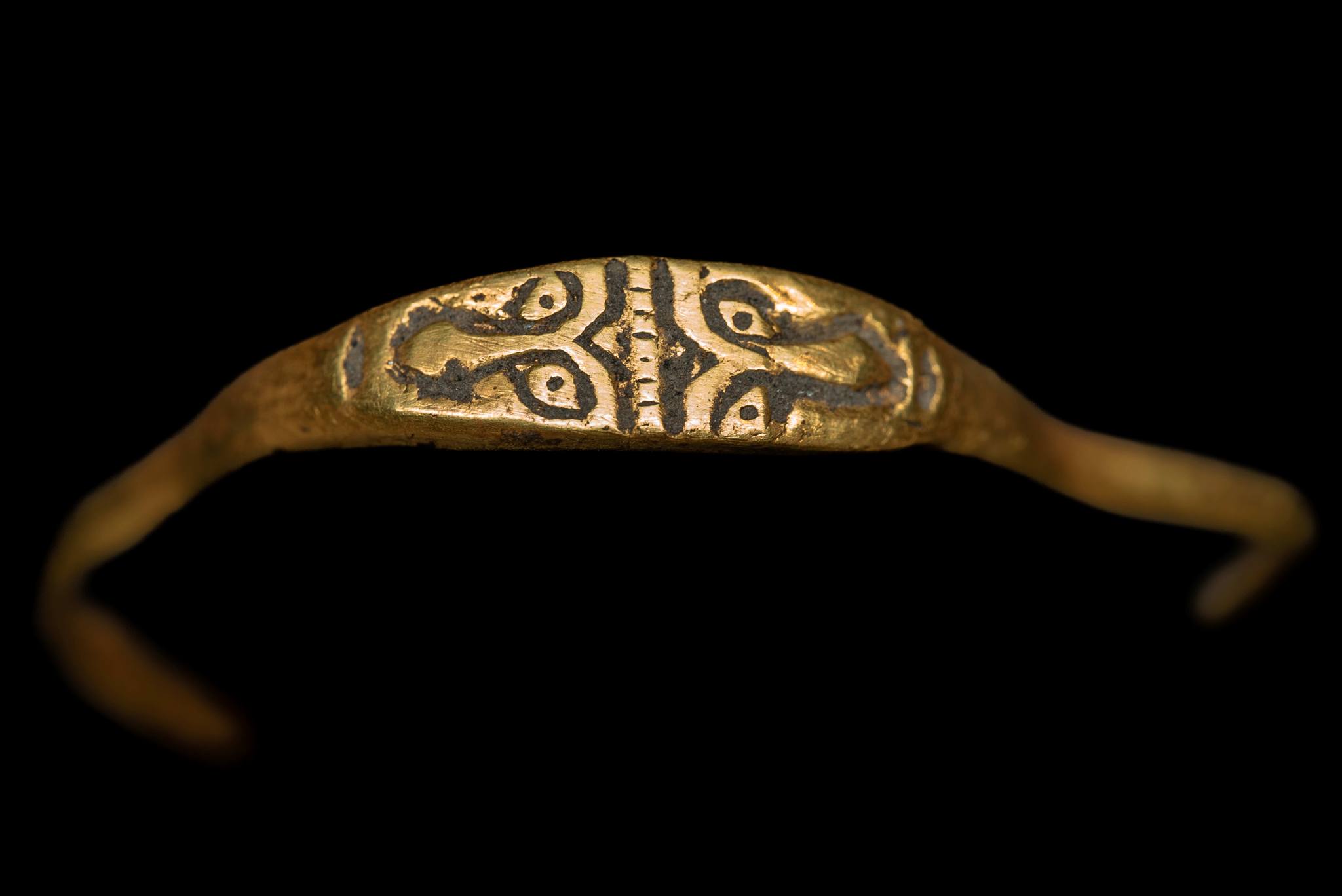
Excavations beneath Wawel Castle, once the seat of Polish kings in the city of Kraków, have uncovered a rare medieval gold ring. The castle’s lead archeologist, Jerzy Trzebiński, has said it’s the first of its kind to have been found in Poland.
Dated to the 11th or 12th centuries, the ring is engraved with two opposing faces, possibly those of Janus, the two-faced Roman god of doorways and beginnings. Other period rings are either plain or marked with simple geometric patterns. It’s also notable for its absence of Christian iconography. Mieszko, considered the progenitor of the Polish state, was baptized in 966 and sought to spread Christianity both within his borders and beyond.
View of the Royal Castle on the Wawel Hill. Photo Jan Kucharzyk/ Getty Images.
More usual, Trzebiński says, is the ring’s half-moon shape which means it was likely produced locally for a member of the elites who served during the Piasts, the country’s first dynasty that ruled until the 14th century.
The 800-year-old ring was uncovered during archeological work that is ongoing in the basement of Wawel Castle’s Danish Tower, one of the structure’s four residential towers. It was found on top of what is believed to have been a stone defensive rampart.
The Danish Tower is named after Eric of Pomerania, king of the united realms of Denmark, Norway, and Sweden. He stayed in the tower in 1424 during the coronation of King Władysław’s fourth wife, Sophia of Halshany.
“Wawel never ceases to amaze us,” Wawel Castle said in a statement. “Who could the ring belong to? You can assume she was rather a secular person and a woman, but otherwise it’s difficult to pinpoint further.”
Located in central Kraków, the Castle and its Wawel Hill are among Poland’s most significant historical and cultural sites. It was awarded UNESCO World Heritage status in 1978.
See more Images:
Detail of the ring. Photo: Wawel Royal Castle.
The ring shape is consistent with others from the period. Photo: Wawel Royal Castle.
The inside of the 800-year-old ring. Photo: Wawel Royal Castle.